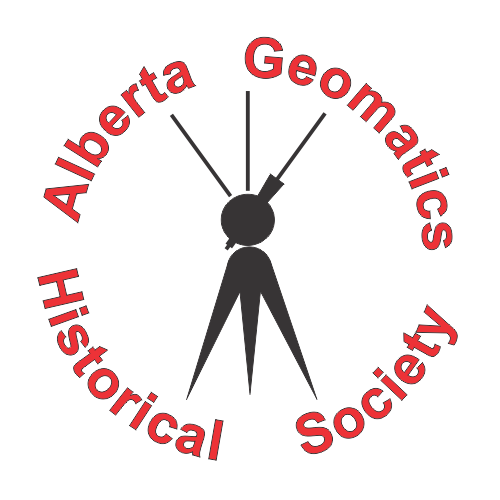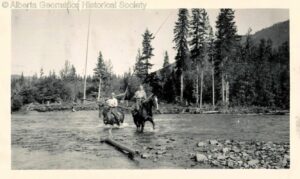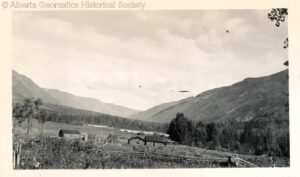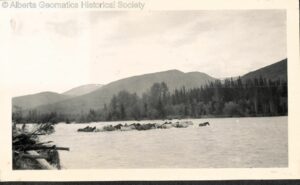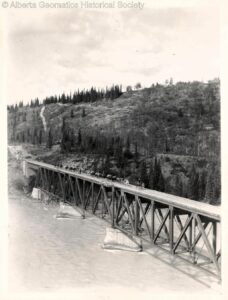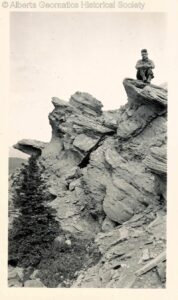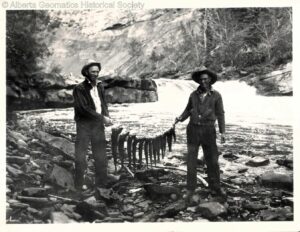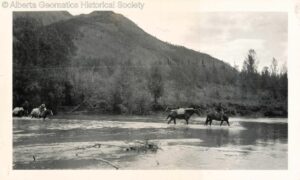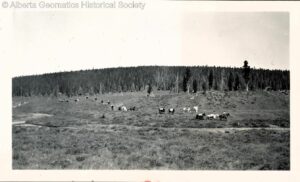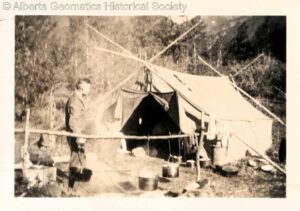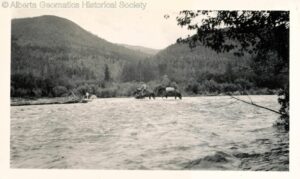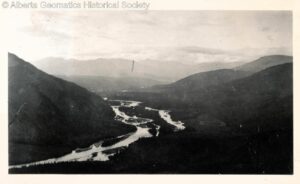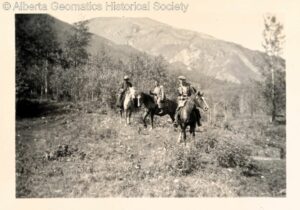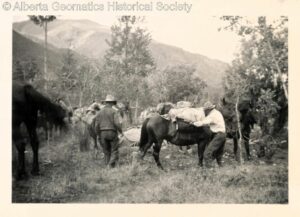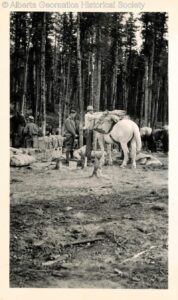
Article originated from the Alberta Land Surveyors’ Association Alberta’s Land Surveying History web publication.
Cecil Benjamin Atkins was born in Cork, Ireland on April 9, 1892 and came to Canada at age 16. He had a job at $25 a month with the CP. When he was studying later for his final exams, he lived on one meal a day for three months as he was too fiercely proud to borrow money.
Mr. Atkins was a lieutenant in the Canadian Engineers during WWI. He obtained his commission as an Alberta Land Surveyor on May 16, 1921. He was president in 1939 and became an honorary life member in the Association in 1968.
Cecil Benjamin Atkins died March 16, 1976 in Victoria, British Columbia.
On December 10, 1965, he wrote the following to Jack Holloway of the Alberta Land Surveyors’ Association:
Dear Jack,
One of the facts of old age is the realization how one after the other of associates disappear from the scene, and the newer ones coming along are strangers, so I think I should discontinue subscribing to the ALS reports. Let me see, I wrote the examination after returning from overseas in 1919, and registered a couple of years later, so for 45 years it was nice to be privileged as a member of the Association, and to see it grow from a half dozen practicing members in the Depression to the large membership of today.
I notice in the Historical Societies Magazine the History of the Association is for sale at a price of $5.00, so enclose my cheque for that amount. I would also like if you can send a map of Alberta for sentimental purposes. By the way I sent you last summer an illustrated volume of early surveying instruments from the Oxford Museum, thinking it would be an interesting reference for the Association’s library, and an example of how knowledge and technique builds on past.
The papers describe the building of a railway line from Hinton to the Hoppe Coal Leases on the Smoky River, evidently fossilized fuel is not a thing of the past, so I uncovered a photo album of my 1954 survey party into that area. We had about 20 packhorses and 10 riding ponies. I had Ronald Hanna Watson, an elderly geologist, to do the plane tabling and identifications, which were not complex as the marker from Mountain Park to the Smoky was the Nikanassin Quartzite for coal bearing series; the old man could climb like a goat and in the hot summer just wore a pair of boots and a tam.
There were several seams and one large one of over went as high as 79% fixed carbon, nearly an anthracite where the stresses of the uplift was maximum.
It took us a week to get there being held up clearing the trails of blowdowns and brule, the water being high fordings-across the numerous creeks and a few rivers such as the Hay and Simmonette was a source of delay.
I started trying to find the 16th base I believe, that ended just west of the Smoky. The line that was run in 1910 had been burnt over and covered with brule, even the Indians of the Valley were not certain, these Indians by the way were of Iroque stock, being brought out by the HBC to Jasper House as hunters.
The notes supplied by your Surveys Branch showed the line crossing the Smoky by a small island, so rafting across sure enough were a few decayed willow choppings among the new growth, so up goes a picket and a compass line found the end of the line covered by a good six feet of brule. We were away.
Running north up and under the infernal brule, I fell down one of the ravines bust my siderial watch and bent the vertical circle which was hammered more or less back to shape. I tried a few solars by projecting the sun on the cross section page of my note book, but they were not satisfactory, except as a rough check. The other transit was a small reconnaissance, three-inch circle I think, hard to read to minutes and of course not stable for extended work.
We swam the horses across the Smoky, and the only one that went down river had our radio, so no news for four months. I staked twenty to twenty five thousand acres, two iron posts to a claim, hope some still survive the slides? The forestry people would not allow us to take in a rifle, we saw a lot of moose, deer, and a few elk, and the odd grizzly, who did not like the sound of chopping line luckily, I had the old army revolver and managed one deer, only fresh meat except porcupine. Lots of Eastern Brook Trout in the creeks, Ghar up Sheep Creek, which was a desolate place and rough and stormy.
A railway to tap the deposit was in our opinion not economical at the then competitive coal market, Gaffer of the CNR made a location a year or so later, starting up Solomon Creek, but the railway turned it down. Grades were heavy and crossings numerous.
Here I am rambling on and making an infernal bore of myself, so the best of luck to yourself and for the Association.
Yours Sincerely,
C.B. Atkins
